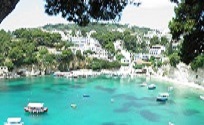Before you start you should bear in mind the following important guidelines to facilitate your stay on board.
-
Select the appropriate group
At sea, human relations are tested. No matter the size of the vessel, the space, where we must live together is still very limited.
-
Plan your trip
Organization is the alpha and omega for a successful trip. In the beginning the responsibilities must be distributed according to each person’s skills. The person with the best sailing ability should chart the course and navigate the vessel, while others should take care of the cooking, cleaning and tidiness on board.
-
Check and analyze the route well before sailing
A good knowledge of the maritime route to be followed is essential. Therefore before sailing carefully study and plan your course on paper and consult the navigational charts (portolan) which are available on board.
-
Plot the correct and short course
Select the safest and shortest route on your navigational chart to reach your destination quickly. Maintain a steady course without making any unnecessary movements. It is imperative to follow the daily weather report. Choose fewer sea miles towards the end of the trip so that you arrive safely and on time at your destination.
-
Look around the boat when boarding
It will not be considered an indiscretion but a prerequisite to check all the boat before departure. In this way you learn the location of all the ropes, rescue articles, life jackets and other useful items that are stored in order to be used at a moment’s notice if necessary. Also the more experienced should check the vessel itself as well as its operational state.
-
There must not embark more persons than are allowed
Sailing companies have reported incidents where after receipt of the boat, more people have boarded at another part of the marina. This action is illegal and endangers the safety of the boat and the passengers. For example, in cases of emergency, there is not sufficient rescue equipment for all on board.
-
Safety on the trip
Sailing boats are considered the safest vessels. Their design prevents them from capsizing or sinking in any weather. If the weather suddenly worsens, seal all the openings, fix any moveable objects on board, reduce your sail and follow faithfully the instructions of your captain. Also, ensure that you tie the boat well when you reach the desired destination. Anchorage is very important since it ensures that you wake up at the same place in the morning and avoid damaging an adjacent vessel. Finally you should move carefully on board (especially when the boat rocks while sailing) using the appropriate posture and holding on to safe points.
-
Pay attention to the drinking water
The vessels are equipped with large water tanks which have however finite capacity. To avoid problems and to save money, watch water consumption, especially when showering or cleaning dishes. Never let the water run unnecessarily.
-
Appropriate dress
Wear shoes with white traction soles to walk steadily on deck. Prefer clothes which protect you from the sun in the day (shirts with long sleeves) and from the chill and damp at night (a windproof and waterproof jacket). Your luggage should be bags without wheels. A sun hat and sun cream with the highest SPF must be your inseparable companion during the day to avoid pain and insomnia at night from a sunburned back. Be prepared for the cold: sailing at night is much “cooler” – due to wind and damp – than you imagine, even in the heart of summer. If you possess isothermal underwear, add them to your luggage.
-
Order and cleanliness
It is also important to keep an eye on cleanliness (keep the toilets hygienic) and tidiness. The advantages will become clear for you during the journey.
-
Food and supplies
Prefer food which can be kept out of the refrigerator. The supplies should match the amount you will consume during your holiday. Think of taking enough bottles with drinking water.
-
The boat’s equipment
The boat has a fully equipped kitchen, spaces for food storage and a refrigerator as well as first aid equipment, bed sheets and pillowcases.







